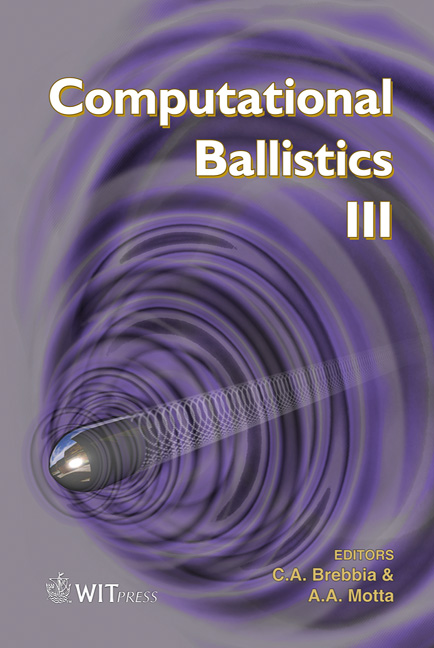Fast Calculation Of Direct Fire Trajectories Taking The Earth’s Rotation Into Account
Price
Free (open access)
Transaction
Volume
45
Pages
10
Published
2007
Size
560 kb
Paper DOI
10.2495/CBAL070031
Copyright
WIT Press
Author(s)
W. Roetzel, W. Czarnetzki & T. Maier
Abstract
An analytical approach is developed for the subsequent consideration of the Coriolis effect. The target is regarded as a moving target in the star-fixed coordinate system. The stationary atmosphere creates a nonuniform cross-wind which reduces the normal moving target deflection of the projectile. The approach is implemented in a previously developed analytical fast calculation method and tested against numerical calculations with good results. Keyword: Coriolis effect, analytical solution, power law, drag coefficient, Mach number. 1 Introduction Several analytical solutions of the point mass equation of motion have been developed for the fast calculation of direct fire trajectories [1–4], which are based on the power law ( ) 2 / * * m m m m D T T v a C v a C Ma C c ⋅ ⋅ = ⋅ = ⋅ = − (1) for the drag coefficient variation with Mach number. McCoy [1] published flat fire solutions for m= 0, ½, 1. The later solutions [2–4] allow for arbitrary values of m and any angle of sight β [3, 4]. Wind can be considered using a coordinate transformation [2, 4]. For uphill and downhill firing the change of pressure and temperature along the trajectory should be considered. Usually mean values of
Keywords
Coriolis effect, analytical solution, power law, drag coefficient, Mach number.




